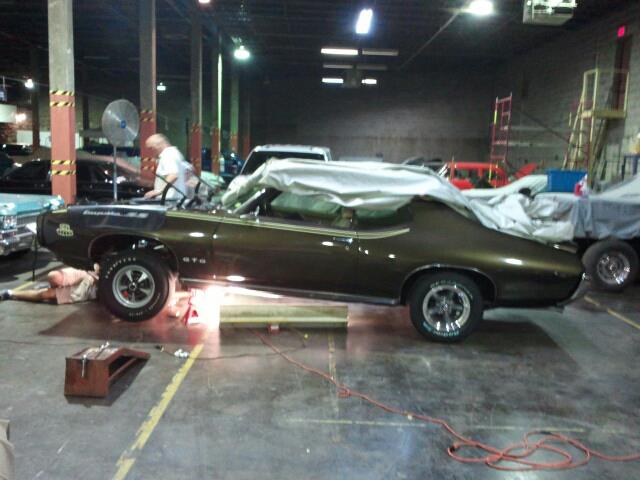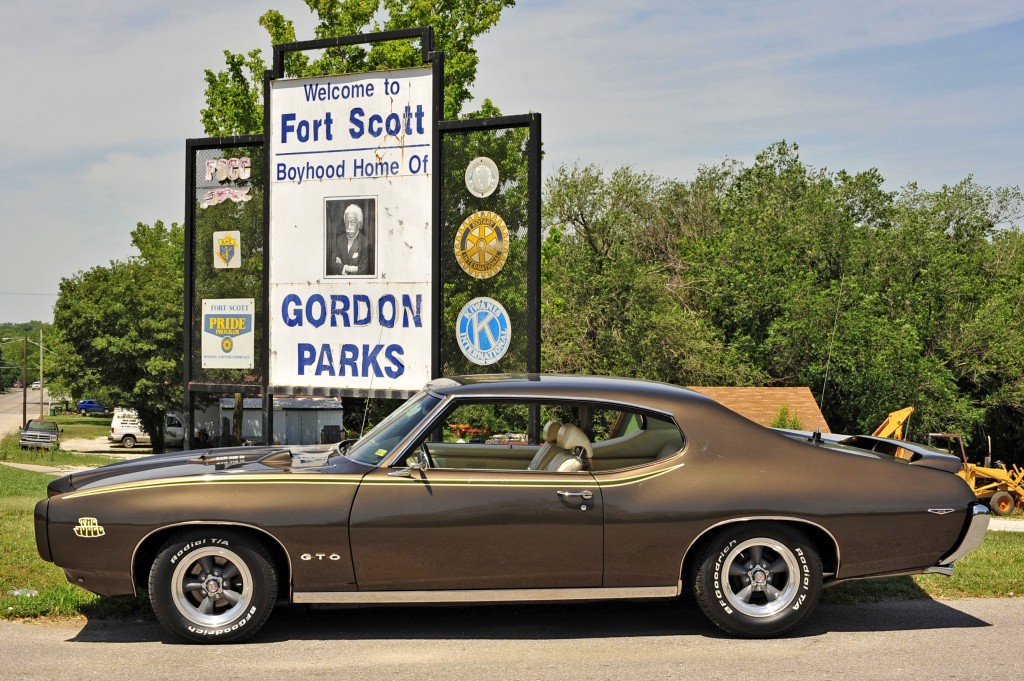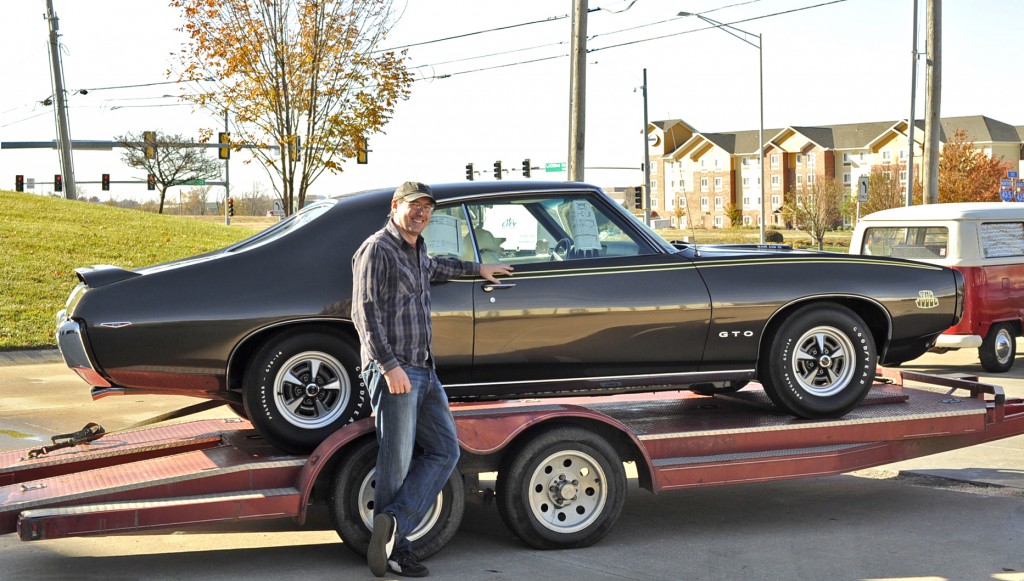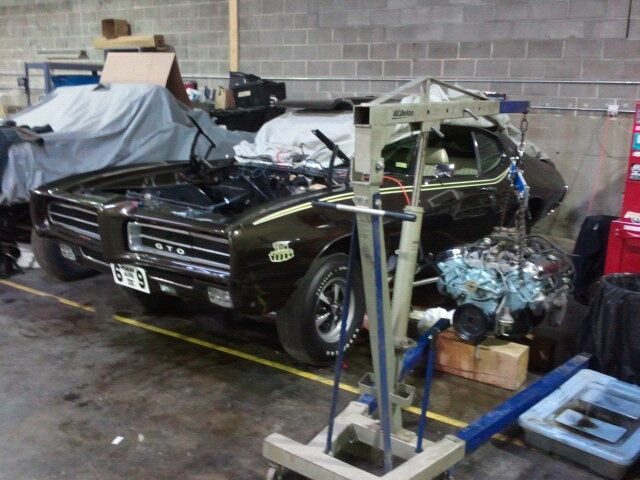As Jim mentioned elsewhere on this blog, we participated in the last three stops of Hot Rod Magazine’s Power Tour 2012 in my 1969 Ram Air IV GTO Judge. Please indulge me as I go into a little more detail about this car and this trip and how it served as the impetus for Project Duster.
A brief history of the 1969 GTO Judge: “Here come da Judge” was a common catch phrase in American households in the late sixties. It came from a popular skit on Rowan & Martin’s Laugh-In, which aired on NBC from 1968 to 1973. When Pontiac decided it needed to enter the low-buck segment of the muscle car market they decided to borrow this popularity and named the car “The Judge”.
Chrysler created and dominated budget muscle market with the Plymouth Road Runner and Dodge Super Bee. These were no-frills muscle cars with bench seats, dog dish hubcaps, column shifters and little else besides a sweet 335 hp 383 big block with 440 heads and induction. Introduced in 1968, the cars were quick, cheap and sold like hotcakes. Pontiac wanted in on the action and development of The Judge began. Then something wonderful happened.
Maybe it was something in the water around Pontiac, Michigan, or the coffee at the Pontiac HQ (we are talking about the sixties, here), but somewhere between The Judge’s inception and its debut, it was transformed from an inexpensive, no-frills muscle car into an expensive, psychedelic beast. For $337 The Judge package came standard with the Pontiac Ram Air III engine, a Muncie M-21 close-ratio four speed or Turbohydramatic 400 and 3.90 gears. Plus all those flashy decals and rear deck spoiler. In an odd tribute to the original stripped down mission of the Judge, the 14″ Pontiac Rally II wheels came without chrome beauty rings. Then there’s the paint.
At first The Judge was only available in “Carousel Red” , which is actually the exact same thing as Chevrolet’s “Hugger Orange”, which is remarkably similar to a pumpkin. Anyway, 90% of 1969 GTO Judges are dressed in Carousel Red, which from this point on will referred to simply as “orange”. At some point, the effects of the fumes from all that orange paint faded and Pontiac allowed buyers to order The Judge in all sorts of snazzy colors like “red”, “white”, “black”, “green” and “brown”. Yes, brown. In fact, the color of my Judge plays heavily into my purchasing it in the first place. I’ll get into that later.
This “brief history of the 1969 GTO Judge” is turning into anything but. I’m almost done. Please bear with me.
Out of 72,287 Pontiac GTOs built for the 1969 model year, 6,825 of the were equipped with “The Judge” package, 6,725 hardtops and 108 convertibles. As you’d imagine, Judge convertibles are hard to come by these days and regularly wear six-figure price tags. 90% of all ’69 Judges were orange But you already knew that. You also know that the Ram Air III engine came standard. But well heeled, race minded types could opt for the Ram Air IV engine with round port heads and rated at 370 horsepower. Mopar had its 426 Hemi and Chevy has its LS6 454 and Pontiac had the RAIV 400. From what I can tell, only 239 1969 Judge hardtops were ordered with the Ram Air IV engine and a four-speed and five convertibles. Plus 58 hardtops with an automatic and zero automatic convertibles. Turns out, these cars are rare!
Preparing The Judge. As you’ve probably figured out by now, I’m the proud owner of a ’69 Ram Air IV GTO Judge. But I don’t really like the word “owner” in this case. I look at myself as more of a caretaker or curator. This old Pontiac is a rare and important piece of American automotive history and I don’t take its possession lightly. Somebody went to the effort of restoring it to almost new condition in 2005 or 2006. It seems to have a couple owners since than and now it sits in my garage. I have every intention of handing The Judge off to the next guy in better condition than it was when I happened upon it. Whoever did the restoration did a good job but there were a few things needing attention by the time I bought the car.
The biggest problem was a nasty leak that dumped oil all over the exhaust system under acceleration. The ensuing plume of smoke made it look like the engine had completely blown apart. An embarrassing spectacle to be sure, but harmless, really. Aside from that, The Judge had fallen out of tune and become grimy and maybe just a little neglected. The oil leak was tricky to diagnose because there was no sign of it with the engine off or at low RPM. Then I decided to put my Flip camera under the car and rev it up. Voila! Oil leak! Turns out, somebody did a shabby job of installing the dipstick tube and it was falling apart, allowing oil to gush out of the block. Happy to have found the culprit, I figured the repair would be a breeze. I couldn’t have been more wrong.
Turns out, a Pontiac 400 of this vintage has a two-piece dipstick tube. A long external tube is a simple press fitting from the outside of the block. But then there’s an inner tube that couples with the long tube which passes through, and is held into place by the windage tray. Obviously, this can only be accomplished by removing the oil pan first. According to my ’69 Pontiac service manual, the pan can be removed by simply unbolting the engine mounts and lifting the engine a few inches. My ’69 Pontiac service manual is full of lies.
It was a typical engine removal and not terribly stressful or difficult. Sure, I broke an exhaust manifold bolt or two and I made a bit of a mess. No big whoop.
The actual removal and replacement of the dipstick assembly took all of a half-hour or so and the parts cost less than $200 including a fancy oil pan gasket. But somehow it would be several months and a several thousand dollars before I got The Judge back together and running again. I ended up replacing the shabby looking original exhaust manifolds, timing cover and fan shroud. Also gone are the points and original coil. I elected to go with an Ignitor II and a beefier coil. Fear not, purists, I still have all the original parts. I also repainted the engine and cleaned up the engine compartment.

Torque Thrusts and Radial T/As already installed out back.
No way I was making the trip on the Polyglas tires.
At some point during this project Jim and I decided we were meeting up with the Power Tour in Miami, OK on June 6th, 2012. In the Judge. All of the sudden I had a deadline. And as typical with projects like this there were a few surprises, several delays and me scrambling to get the car running in time. I topped off the fluids, shut the hood and went for my first test run with a week to spare. No major issues appeared to be present.
Not yet, anyway.
To be continued.




